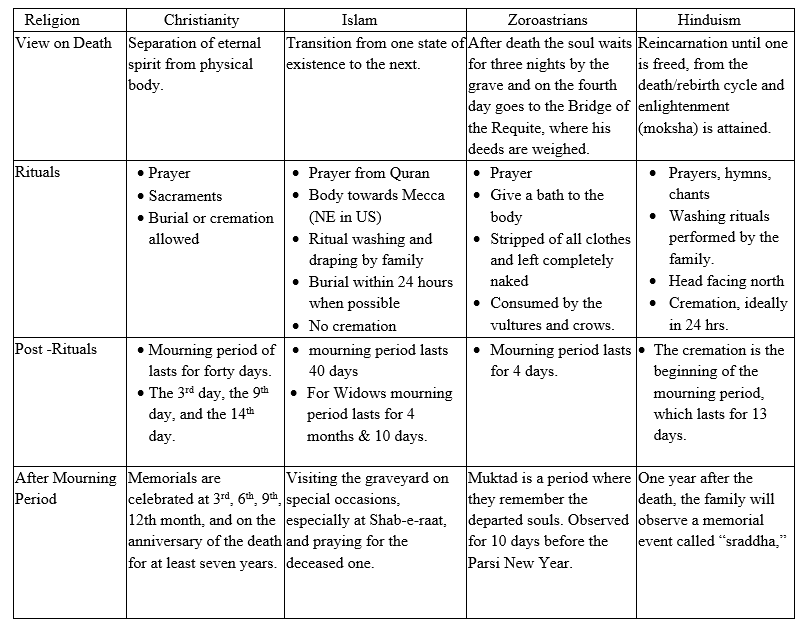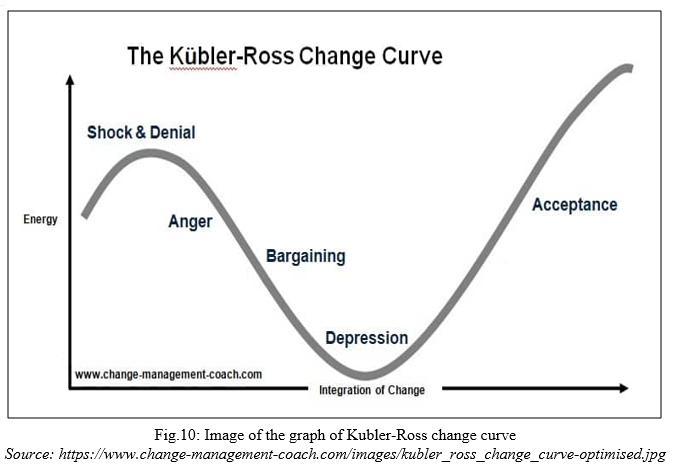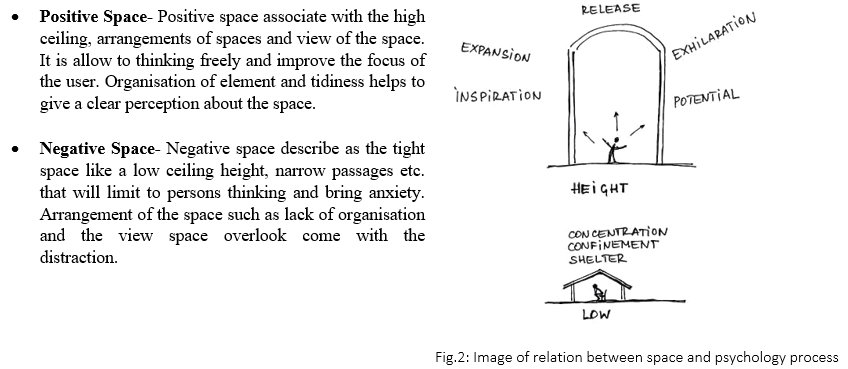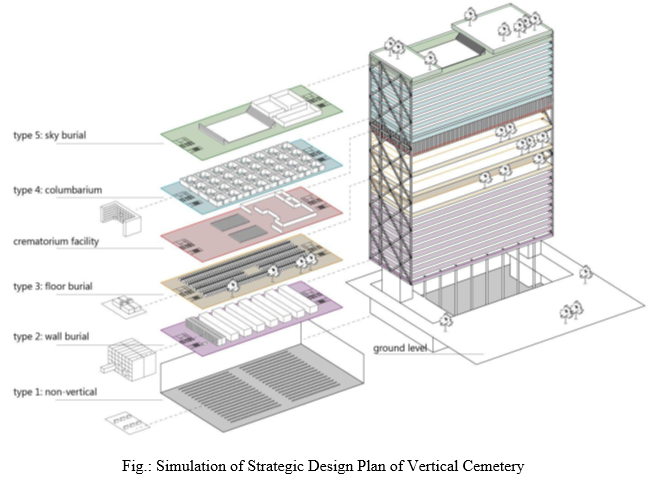Ijraset Journal For Research in Applied Science and Engineering Technology
- Home / Ijraset
- On This Page
- Abstract
- Introduction
- Conclusion
- References
- Copyright
Architecture of Death: Multifaith Burial and Cemetery Centre
Authors: Anushka Srivastava
DOI Link: https://doi.org/10.22214/ijraset.2022.42935
Certificate: View Certificate
Abstract
Life and death are perpetual topics for human beings to investigate. The basic kind of funeral architecture is cemeteries, which serve as the final resting place for humans and their final homes. The demand for cities has been highlighted as a result of population growth. This research focuses on the spaces linked to a multi-faith cemetery as well as the types of spaces that evoke emotions throughout the death process. For the research, four main religions were chosen: Hinduism, Islam, Christianity, and Zoroastrianism. The aim of the research is to find out the emotional aspect and spatial character of the space associated with deceased. The main research topic was: what effect do emotional elements have on death places and what are the design criteria for high-rise cemeteries in metropolitan areas? According to the findings of this study, emotions such as mourning or grief, as well as remembrance processes, were major preoccupations. It also indicates that all faiths\' funeral practises and ceremonies have a similarity, as well as shared concepts about death. The study\'s result offers a fresh perspective on how the architectural character of spaces aids in coping with the emotions associated with death.
Introduction
I. INTRODUCTION
Birth and death are natural stages in the life of every human being. But the emotional aspects of these two events are significantly different. The birth of a new human is associated with excitement and optimism; thoughts about death are usually scary and unpleasant. People die every day, and architecture cannot change this fact. But architecture can influence the perceptions and emotions connected with the death of a relative.
Humans use architecture as both their first and last stop. A new born is honoured and welcomed into the new world in the hospital. The final stage is to take the deceased to the cemetery, wherever they are laid to rest in peace. Death cannot be avoided. To cope with and minimise the great pain caused by the death of our loved ones, a wide range of afterlife beliefs and stories have been developed on a cultural, spiritual, geographical, and other level. Religion and culture are two underlying themes in these afterlife spirits and beliefs (SONG, MAY 2017).
A death may have a significant influence on someone's life, and the environment in which these events occur should help individuals through tough times. Funerary places are important from the aspect of a designer since they must account for both physical and emotional needs, which involves knowledge and empathy on the part of the designer.
The purpose of this research is to find assumptions for the design of funeral estates in contemporary society. Because everyone must deal with death at some time in their life, cemeteries and crematoria are important places to visit. Funerary spaces are interesting to designers because they must account for both physical and emotional needs, which involves knowledge and empathy on the designer's side. Funeral rituals serve different purposes depending on religion and time and place. Historically, the aim of most religious funerals was to assist the departed in their journey to the next life, and this is still an integral part for many.
II. HISTORIC TIMELINE OF DEATH PRACTICES
It was an established tradition by the time the first Hindu scriptures were published, about 1,200 B.C. There is archaeological evidence that in the distant past, burial was the norm, and subsequently cremation with a secondary burial became prevalent, giving way to cremation, which is now the dominating habit. It is unclear why cremation became popular; some claim it is a method of cleansing, freeing the soul from a filthy body; 2) it represents the transitory aspect of life, of destruction and rebirth; or 3) it eliminates the body as a health risk and does not take up valuable land.
This is how and why the practise of cremation developed. It was an established tradition by the time the first Hindu scriptures were published, about 1,200 B.C. There is archaeological evidence that in the distant past, burial was the norm, and subsequently cremation with a secondary burial became prevalent, giving way to cremation, which is now the dominating habit. (HINDU CREMATIONS, 2018)
- Ancient History: There are several beliefs on the origins of cremation and its usage as a technique of disposing of deceased remains. Cremation is said to have developed in Europe and the Near East during the Stone Age, about 3000 B.C. It seemed to have spread over northern Europe in the late Stone Age. It was firmly embedded in Grecian burial practises during the Mycenaean Age and was also embraced by the early Romans around 600 B.C. Throughout history, one death ritual has been preferred over another, with burial and cremation being alternated. Both burial and cremation are customary in various regions, such as the Middle East and Europe. (History of cremation, n.d.)
- The middle Ages: In the middle Ages, cremation was punished by death and was used to punish sinners. After a conflict, epidemic, or hunger, mass cremations were also performed to limit the spread of infectious illnesses. Cremation has been used as a form of punishment up to the present day. This was demonstrated when the corpses of 12 men convicted of war crimes in the Nuremberg Trials were incinerated rather than returned to their families and disposed of in a secret location, preventing the place from being used as a memorial site. In Japan, however, the erection of a memorial structure for the remains of executed war criminals has been permitted (History of cremation, n.d.).
- Islamic Influence: With the introduction of Arab traders on Kerala's Malabar Coast in the early seventh century, Islam first appeared in India. The Sufi tradition greatly promoted the development of the Islamic religion throughout the Delhi Sultanate (1206-1526) and the Mughal Empire (1526-1858). The funerary custom and method of disposal of the dead body followed by Islam significantly diversified from that appreciated by the traditional Indian culture. The practice of retaining a person’s memory after death was executed in the form of architecture which lead to the construction of structure like Taj Mahal, Gol Gumbaz, Humayun’s tomb, which are regarded as architectural wonders in the current day world.
- European Influence: Thomas the Apostle is credited with introducing Christianity to India. By the 6th century AD, the Catholic faith had taken root in India. Through the conversion of religion by missionaries, it became a dominating religion. Various other faiths arrived and established themselves in India to varying degrees. They brought with them their own set of traditions and culture for the ultimate remembrance of the deceased.
III. CURRENT SCENARIO IN INDIA
- Space: The availability of land in metropolitan cities in India is exceptionally scarce. The increasing population due to migration and other factors results in higher average deaths per year, which poses pressure on the appropriate use of land for death practices and other functions. Structure for dead require large spaces to function efficiently, especially in the case of cemeteries where these places cater to the burial of a large number of deaths each day. Maintaining enough space with a limited surface area for burial becomes tough, while also considering the slow decomposition of the body in burials. This has induced the inefficient practice of disposal of dead bodies in a metropolis.
- Environment Perspective: An analysis of cremation done scientifically has shown that it meets most of the criteria of an effective funeral rite. However burial has been found to be lacking in several respects as far as Hindu rituals and beliefs are concerned. It is believed in the Hindu culture that people who have led relatively good lives, by the very act of burial increase their chances of being affected by negative forces in the afterlife. Burial is also a source of environmental contaminants, with the 'casket' or 'coffin' itself being the major contaminant. The other concern with burial is that of radioisotopes that may enter the body before or after death although cremation does not seem to take care of this aspect either.
- Water Pollution: In Hinduism, the cremation ground (shmashana ghat) is located near a river, if not on the river bank itself. According to tradition, a dead body is washed by family members in the river water before being put on wood pyre with feet facing south. Hindus believe that soul of a dead person must be completely detached from the body to attain 'moksha'. And for this, an open cremation is needed so that the soul can be released easily as soon as the body is set on fire. The ashes are later immersed in the river completing the rite. (TV, 2016)
- Deforestation: A traditional Hindu funeral pyre takes six to eight hours and burns 500-600 kg of wood to burn a body completely. Every year fifty to sixty million trees are cut and burned during cremation in India, which results in about eight million tonnes of carbon dioxide or greenhouse gas emission. Providing on opportunity to the bereaved for sustainable ways of disposal through new technologies will help mitigate the use of wood in cremation completion completely.

IV. METHOD OF CORPSE DISPOSAL
The process of disposing of the ashes of a deceased individual being is known as "human corpse disposal." The improper disposal of a human corpse poses both a sanitation and a public health risk. The body gets decomposed in two storage processes:
- Rapid decay of soft tissues in the body.
- Slow decomposition of bones that remain intact for a prolonged period under certain circumstances.
A number of disposal methods are performed. A funeral is a ritual that may be performed in conjunction with the final disposal of a deceased person. In any case, the form of disposal is usually influenced by religion, with the desire to keep an eye out for the departed, and could be highly ritualised.
According to the beliefs of various religions existing in India, the following traditional methods of disposal of a body are mainly practiced:
a. Cremation
b. Burials
c. Excarnation
d. Sky Burial
V. HOW DEATH ASSOCIATE WITH EMOTION & SPACE
A. Praying
Death rituals, such as the ritual of prayer, can offer cultural comfort to people who are grieving the loss of their own life or that of another. Prayer rituals can help maintain a sense of control and identity during this time of crisis, offering comfort, meaning and structure (Souza, 2021).
B. Mourning
Mourning can be seen as the symbolic action of grief, where grief is the emotion and mourning is the process of dealing with that emotion. The process of mourning is usually structured and performed around spaces or material objects. Such rituals and rites can be dated back to the very first human civilizations. The purpose of these rites as following:
“The performance of the commemorative ritual was also intended to tame the feeling of loss and render it as a natural transition to the other world. In this way, the public ritual of taming death created a sense of control, allowing its participants to overcome loss.”
C. Remembrance
There are many reasons to celebrate and mourn the life of a loved one, but for many, these six things sum up why remembrance is important:
- To acknowledge the reality of death.
- To acknowledge the emotions associated with the death.
- To acknowledge that the relationship with the person who died has shifted from physical presence to memory.
- To acknowledge changes in personal self-identity.
- To ponder and search for new meaning in life.
- To receive the loving support of remaining family and friends.
D. Emotions Related to death
- Everyone has to deal with the death of a loved one at some point in their life.
- Different emotions come into play when a person dealing with death and it is depend on how well a person copes.
- Sadness is the common reaction, depression and anger are the other emotion commonly experienced by those who are grieving. Whereas scared, lonely and confused are also become the part of the one who lost their loved ones.
- People mourn and grieve depends on many factor such as gender, beliefs about death, personality types and perception of the loss. Women see death with more sadness while men see it with contentment.
Characteristics of Stages of Grief:-
|
Denial : |
Avoidance, Confusion, Elation, Shock & Fear |
|
Anger : |
Frustration, Irritation, Anxiety |
|
Bargaining: |
Struggling to find meaning, Reaching out to other, telling one’s story |
|
Depression: |
Overwhelmed, Helplessness, Hostility, Flight |
|
Acceptance: |
Exploring option, New Plan in Place, Moving on |

E. Architecture of Emotion
As we study the causes, significance, and impacts of emotions on human psychology and behaviour, the necessity to understanding its connection with architecture becomes clear. Emotion is a link that influences how inhabitants perceive architecture. Emotion Consider how the form and angles of your surrounds may have a significant impact on how you interact with the environment and people around you.
There is always a link between the environment and a person's behaviour, which results from either the users own perception of the space or an intended experience designed by the architect. Each space is associated with the emotions of the user which provides a 'sense of place'. The scale of emotional impact that the space creates on the occupant differs as per the 'quality of spaces'.
The functioning of a crematorium enable to design spaces that can interact with the sense of the user through different form and volumes. For example, the prayer hall, waiting areas, processional axis. The effect of emotion on every person is subjective, the feeling of grief and sorrow in varying amount always exists.
- Scale and Proportion: The volume of a space influences the emotion of the user. For instance, the lower proportions between the floor and the ceiling can bring in a feeling of discomfort and make the user claustrophobic. The larger proportions can make spaces more approachable and welcoming to access.
- Material: The use of materials defines the characteristic of a space and evokes impressions of the texture that are intentionally felt. Impressions of hardness and softness, or heaviness and lightness, are connected with the surface texture of the material. Bright colors are used to invoke positive emotions while dull colors signify negative emotions.
- Form: The form of the structure is a culmination of external and interior built and unbuilt spaces which imparts the very first impression about how the user perceives the overall image of the design. It can invoke the initial stimulus to emotion in the architectural narrative.
- Movement: A transition from spaces of different characteristic can trigger changes in emotions and behavior of the user. Movement from extremely closed to open spaces brings out a feeling of enhanced/ dramatized feeling of openness. Similarly, transitions between lighted and dark spaces bring changes in the emotions.
- Light: The quantity and quality of light have an impact on how a place functions. Light serves as a medium of communication between the indoor and outdoor worlds. Space is seen differently when the light changes. Human mind may be controlled to respond to the different levels of light in a building.
F. Space
Environmental psychology is the study of the interaction between people and the spaces they inhabit. Lighting, colours, configuration, scale, proportions, acoustics, and materials address the senses of the individual and generate a spectrum of feelings and practices (Harrouk, 2020). Space control people’s movements, creating a flow from element to element, telling people where to look, what to read and what’s important. While designing spaces, the function of the space, the time people will spend in it, and the mood you want the space to evoke should be taken into consideration.
Design and creative measures should be considered according to the social and psychological needs of the occupants. Psychology of space is in fact "the study of human relations and behaviours within the context of the built and natural environments". Having a direct impact on our subconscious, contributing to our emotions and perceptions, through that special part of your brain that reacts to the geometry of the space (Harrouk, 2020).

VI. HIGH RISE CEMETERY IN URBAN SPACE
A. Vertical Cemetery
Urban high-rise cemeteries provide a space for people to visit loved ones in cities and areas of urban density. As a result, it could allow the deceased to be laid to rest in relatively close proximity to their loved ones. This model addresses the challenges of displacement and distance between the living and the dead created by urban sprawl, population growth and governance issues (Team, March 2020). Vertical cemetery is a new concept to solve land shortage issues for the urban cemetery. This 'skyscraper cemetery' design proposal was submitted by Martin McSherry, a student at Copenhagen's Royal Danish School of Architecture. The proposal addresses the need in Norway for alternative burial methods as land becomes more scarce and crowded.
McSherry’s vision for the future cemetery is that to build up as a skyscraper. Different floors are designed specifically for different religions and for non-believers. McSherry envisions that “existing cemeteries will slowly be removed to provide land to the city’s living souls. The vertical cemetery will become a significant part of the city and daily reminder of death’s existence. In time, the city’s tallest and largest building will become a grave for all its citizens – the city’s ever-changing monument.” (SONG, MAY 2017)
B. Verticality as a Challenge for Some Typologies
The side effect of population explosion is the rise of space demands in the city. Verticality has become the practical solution to answer the land needs in urban area. "Verticalism" (Abalos, 2010) has just begun. This stacking methodology has been applied to almost every building typology. University campuses, museums, libraries, fashion buildings, sport buildings, along with combination of all these mixed with residential, hotel, and office typologies. We are moving to a phase in which verticality is seen as tolerance, not vandalism. 'Form follows function' has changed to 'form follows finance'.
In last 5 years, we are introduced to "Vertical Park", the combination application of technology and new idea. However, verticality is still not (yet) the solution for some specific typology. Zoo and cemetery are the biggest challenges for this method. Rising problem of lacking space, these typologies need to be transformed into vertical form. It will help to resolve a growing spatial problem (Hariyono1, 2015).
Cremation has certainly become more popular to both save burial cost and land in urban area, but this does not make cemetery obsolete. In some religions, cremation is forbidden and the dead body is required to be buried. But in this case, burial is not always on the ground. The possibility of verticality will be overlooked with religion/belief rules in burial.

C. Urban Cemetery Demands
Cemeteries are usually end up with a less dominant priority to be designed. Houses could be squeezed, offices could be shared, shops could be stacked, but not cemetery. Death number can be decreased, but what has been buried cannot be replaced. Cemetery has no other possibility than "extending". Land will always be constantly demanded for this typology.
he rapid population and economy growth in Hong Kong causes a very big competition in land uses between the live and the "dead". To optimize the space, some building developers have built tall skyscrapers. Soon, this transformation will be applied to typology that has caused problems of quantity. There is no possibility to replace them with cemetery in the top to-be-built list.
Conclusion
This research investigated and analysed the historic and modern funeral traditions and rituals of India\'s four major faiths. The different alternatives for corpse disposition after death, the types of cemeteries, and the future need for land required to continue with these ancient burial practises were also examined. The goal was to obtain a better understanding of these practises. The study was designed to explore emotional aspect with the context of all religion funeral rites & rituals and to draw implication for spaces associates with these activities and their impact on human psychology. The context of rites & rituals helped the bereaved individual confront their loss and help them to cope with it. One suggestion for space designing and other providing services for bereaved person and families is to consider the importance of understanding bereaved participants grief & emotional experience and the factor that impact their experiences at cemetery. The conclusion drawn from this study is that there is a strong link between emotion and space. It is believe that the architecture can, & perhaps should be considered as physical emotional & memory places. As an architecture use have to see to the specific emotion & memories to the place and let them speak. Funeral places are also used for grief, funerary ceremonies, remembering, and remembrance. The ability to execute rituals is very crucial during the grief process. 1) Praying is the important part of the death rituals all religion unite with this, so the place for praying is an important features that should be recommended in cemeteries for all religion. 2) The concept of bringing all religion at a one place bought a common harmony in a society. 3) Light and shade have a great impact on the environment and human psychology. It will help to reduce the stage of grief during performing the rituals. 4) Different color have a different impact on the human Psychology. 5) The future cemetery should function as a social hub for multiple purpose. Architectural design must incorporate various functions and provide more services for the community. 6) Future cemetery design must include emotion design in human scale. 7) Memory is one of the cultural treasures that needs to be preserved and inherited. Using technology to transfer abstract memories into digital data allows human to preserve the memories infinitely. 8) Spirituality is present in all people and is often of profound importance towards the end of a person’s life, even for those who would not normally consider themselves to be spiritual. 9) Rituals follow a standard form and structure that can be broken down and understood, allowing for better facilitation within end-of-life and palliative care. 10) Rituals provide a sense of control and allow people to maintain a sense of identity when faced with the crisis of death and bereavement. 11) Death and dying represents life’s final rite of passage, where prayer rituals are performed to aid the dying person in passing from one life to the next and to provide comfort, meaning and structure for the dying and the bereaved person in a time of spiritual suffering.
References
[1] 13 Religious Perspectives On Mourning And Memorial Events. (n.d.). Retrieved from everplans.com: https://www.everplans.com/articles/13-religious-perspectives-on-mourning-and-memorial-events [2] Arnold, D. (24 February 2017). Burning Issues: Cremation and Incineration in Modern India. Springer, 27. [3] Asher D. Colombo, E. V. (26 April 2021). Why Do We Go to the Cemetery? Religion, Civicness, and the Cult of the Dead in Twenty First Century Italy. Review of Religious Research, 27. [4] BENMOSHÉ, B. W. (2017). RETHINKING THE URBAN CEMETERY: INNOVATIVE AND SUSTAINABLE DESIGN FOR MEMORIALIZING OUR DECEASED LOVED ONES. UNIVERSITY OF FLORIDA . [5] Dr. Indrani Chakraborty, D. S. (Aug 2020). Challenges for Designing of Hindu Crematorium in Puri, Odisha, India. International Research Journal of Engineering and Technology, 13. [6] Ellie. (2011, October 21). Defleshing The Dead: What Is Excarnation And Where Does It Occur? Retrieved from Tutor Hunt: https://www.tutorhunt.com/resource/358/ [7] Everything You Need to Know About the Tibetan Sky Burial. (2021, SEP 17). Retrieved from The Living Urn®: https://www.thelivingurn.com/blogs/news/everything-you-need-to-know-about-the-tibetan-sky-burial [8] Glennys Howarth, P. C. (1996). CONTEMPORARY ISSUES IN THE SOCIOLOGY OF DEATH, DYING AND DISPOSAL. Palgrave Macmillan, 19. [9] Hariyono1, W. P. (2015). Vertical Cemetery. ScienceDirect, 14. [10] Harrouk, C. (2020, March 20). Psychology of Space: How Interiors Impact our Behavior? Retrieved from ArchDaily: https://www.archdaily.com/936027/psychology-of-space-how-interiors-impact-our-behavior [11] Helena Nordh, K. H. (2017). A peaceful place in the city—A qualitative study of restorative components of the cemetery. Elsevier, 10. [12] Helena Nordha, K. H. (2017). A peaceful place in the city—A qualitative study of restorative components of the cemetery. ELSEVIER, 10. [13] HIGGINS, J. F. (2010). DEATHSCAPES: DESIGNING CONTEMPORARY LANDSCAPES TO SOLVE MODERN ISSUES IN CEMETERIES. B.L.A., Texas Tech University. [14] History of cremation. (n.d.). Retrieved from vijaygas: http://vijaygas.in/history_of_cremation.htm [15] Ka Yan Lai, I. S. (16 July 2019). Everyday Use of the City Cemetery: A Study of Environmental Qualities and Perceived Restorativeness in a Scottish Context. urban science, 19. [16] Keddeman, S. (2011). Funerary places:The essence of cemetery and crematorium design. Chairgroup Landscape Architecture Wageningen University. [17] Marsha A. Goetting, C. D. (2003). Cremation: History, Process, and Regulations. The Forum For Family and Consumer Issues, 7. [18] Milano, A. (2020, August 25). 3 Reasons Why Memorialization Is Important to the Grieving Process. Retrieved from milanomonuments: https://www.milanomonuments.com/blog/3-reasons-why-memorialization-is-important-to-the-grieving-process [19] Never Built & Visionary Projects. (2010, Sep 27). Retrieved from SkyscraperPage.com: https://skyscraperpage.com/forum/showthread.php?t=185307 [20] Panjwani, H. (2017, November 21). The Last Shadow – Redevelopment of Amardham crematorium in Nasik. Retrieved from architecturelive. [21] RUGG, J. (19 Aug 2010). Defining the place of burial: what makes a cemetery a cemetery? University of California, San Diego, 19. [22] SHARMA, I. (1972). DISPOSAL OF THE DEAD AND PHYSICAL TYPES IN ANCIENT INDIA . DELHI: ORIENTAL PUBLISHER. [23] Skår, G. S. (2019). Urban cemeteries’ potential as sites for cultural encounters. Mortality, 26. [24] SONG, S. (MAY 2017). ARCHITECTURE OF AFTERLIFE:FUTURE CEMETERY IN METROPOLIS. [25] Souza, D. A. (2021). The importance and meaning of prayer. British Journal of Nursing, 6. [26] Team, D. R. (March 2020). The Future Cemetery Workshop. The University of Melbourne. [27] Tunga, S. S. (June 2018). Cremation: History and Prevalence. Social Science Review, 13. [28] Uzell, J. (2018, march 27). Religion Media Centre. Retrieved from Factsheet: Death and funerals in world religions: https://religionmediacentre.org.uk/factsheets/death-funeral-rituals-in-world-religions/ [29] Vries, P. d. (2009). emotion in architecture: the experience of the user. [30] Wo, T. Y. (May 2011). LAND OF MEMORY ? ARCHITECTURE AS AN IN BETWEEN THE LIVING & THE DECEASED. HONG KONG: CHINESE UNIVERSITY OF HONG KONG. [31] Yasminah Beebeejaun, K. M. (July 2021). Death in the Peripheries: Planning for Minority Ethnic Groups beyond “the City”. Journal of Planning Education and Research,14.
Copyright
Copyright © 2022 Anushka Srivastava. This is an open access article distributed under the Creative Commons Attribution License, which permits unrestricted use, distribution, and reproduction in any medium, provided the original work is properly cited.

Download Paper
Paper Id : IJRASET42935
Publish Date : 2022-05-19
ISSN : 2321-9653
Publisher Name : IJRASET
DOI Link : Click Here
 Submit Paper Online
Submit Paper Online

